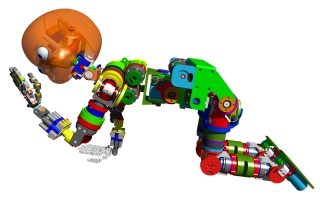Cognitive Architectures

Introduction
In the engineering of machine intelligence one cannot disregard natural inteligence that humans, together with other animals, display. Intelligence is here understood in the broad sense of behaving appropriately situated in an environment, as in the case of a fight-or-flight response for securing survival, as well as in the case of a mathematician proving a theorem. In these situations, hard to cast as a neat optimization problem, scientists often look into biology for inspiration. What biological evolution solved before has the potential for, at very least, provide guidance on how to approach the problem.
Research in this area is focused on
- decision-making, namely in the interplay between emotion mechanisms and rationality, and on
- robotic platforms (e.g., humanoid robots) situated in a physical environment, socially interacting with humans, other robots, and objects in the environment.
Research activities
Interest on cognitive architectures had its origin on previous research carried out by the group on emotion-based agent models. Neuroscientific findings on the role of emotion mechanisms in the brain to decision-making processes have driven this research towards the construction and experimental testing of agent models taking those aspects into account.
As ISR is one of the partners of the RobotCub EU project, research has been conducted using the humanoid robot being developed in this project: the iCub. The anthropomorphic design of this platform makes it an interesting platform for developing cognitive architectures. In particular, a developmental approach has been taken, meaning that cognitive capabilities are being built on top of more basic ones, on a modular fashion.
ISLab has been working on endowing the cognitive architecture with a spatial model of the environment. This model is built on top a basic attention system, driven by perceptual features. At the current stage of this research, the iCub is capable of learning new objects, once they are shown to it close to his "eyes". Whenevet learnt objects are found on the environment, iCub gazes at them, sequentially.